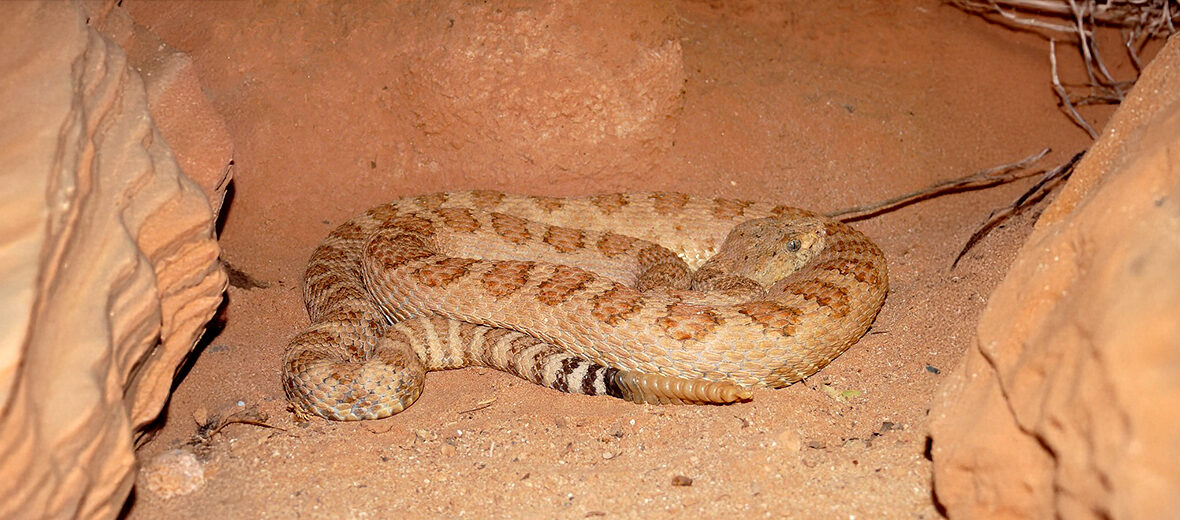
The Grand Canyon pink rattlesnake, aka Grand Canyon rattlesnake or canyon bleached rattlesnake, hails only from the Grand Canyon region of Arizona and Utah in the United States. These snakes face the threats of habitat loss and destruction at the hands of residential and commercial developments, and agriculture; hunting; and trapping. However, they are abundant enough to be listed as Least Concern by the IUCN. Their population trend is listed as stable.
First the Stats…
Scientific name: Crotalus oreganus abyssus
Weight: Up to 1+ lb.
Length: Up to 54 inches
Lifespan: Up to 25 years
Now on to the Facts!
1.) These rattlesnakes are found along both rims and the floor of the Grand Canyon.
2.) They can also be spotted as far north as the Kaiparowits Plateau between the Escalante River and Paria River Drainages of Kane and Garfield Counties, in Utah, also in the surrounding Grand Canyon region.
3.) Grand Canyon pink rattlesnakes tolerate a range of habitats including grassland, Great Basin Desert scrubland, bottoms in the Grand Canyon, talus and cliff slopes, rolling hills, bajadas in pinion-juniper woodland, and pine forests.
4.) While primarily diurnal (active during the day), these rattlers can also be cathemeral (active both day and night).
5.) Their calm disposition and superb camouflage allow them to escape the detection of others.
But wait, there’s more on the Grand Canyon pink rattlesnake!
6.) Mice, lizards, and birds are all on the menu.
7.) Eagles, hawks, roadrunners, coyotes, bobcats, and foxes all prey on these rattlesnakes.
Did you know…?
Rock squirrels, a common sight in the Grand Canyon, evade this rattlesnake via a process called “mobbing,” wherein the squirrels will attack the snake by kicking dirt and rocks at it and quickly waving their tails to heat the air around them, causing the snake to think a larger mammal is after them.
8.) Like all pit vipers, these rattlesnakes have heat-sensitive pits that identify body thermals of animals which aids in hunting.
9.) Some researchers list this taxon as elevated to its own species as (Crotalus abyssus), or as a subspecies of the Great Basin rattlesnake.
10.) Being ovoviviparous (eggs are developed within the female and live snakes are birthed), these snakes can birth up to 25 juveniles at a time.
But wait, there’s still more on the Grand Canyon pink rattlesnake!
11.) As is the case with other rattlers, their venom is classified as both a neurotoxin and hemotoxin. This means that their venom can cause neurological damage, like paralysis, and also causes severe blood clotting.
12.) Their venom can cause pain, swelling, tissue damage, nausea, drooling, and in severe cases, even shock or respiratory difficulties.
13.) Polyvalent crotalid antivenin is recommended for the treatment of almost all rattler bites.
Now a Short Grand Canyon Pink Rattlesnake Video!
Be sure to share & comment below! Also, check out the Critter Science YouTube channel. Videos added regularly!

Want to suggest a critter for me to write about? Let me know here.
Some source material acquired from: Wikipedia & IUCN
Photo credit: Fishopotamus



